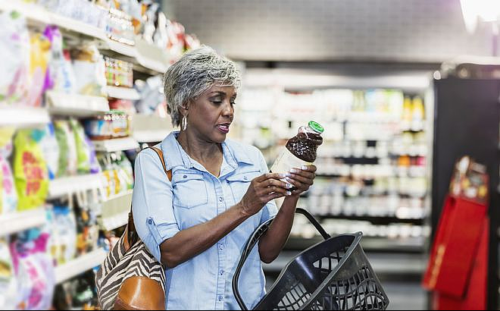Hopefully, as you age, you will begin to make the necessary changes to your diet that will fuel you, so your food shopping experience will be rewarding. Nutritionists agree that making a plan before hitting your fave market is your best bet. Planning your grocery shopping helps you save money, particularly if you’re on a fixed income, and can even result in a more intelligent list of food items.
Grocery shopping should not be a chore, but if you find yourself coming up with excuses for not venturing out, change things up to make it more bearable.
How to make food shopping easier
- Most major supermarket chains have motorized carts if mobility is an issue for you.
- Don’t hesitate to ask a store employee for help reaching items on higher shelves, pushing your shopping cart, or carrying heavy bags to your vehicle.
- If you’re feeling pooped while shopping and there is a pharmacy within the store with seating, sit a spell to take a breather.
- Shop on a day when you feel the most rested.
- Pick a time to shop when a store is less crowded to avoid long check-out lines.
- Check with the National Association of Area Agencies on Aging or Eldercare Locator to see if there are volunteers who can help with your grocery shopping.
Buying healthier food options
For older adults, consuming a variety of nutrient-packed foods has been linked to reduced risks of developing chronic health conditions, such as osteoporosis, arthritis, obesity, high blood pressure, diabetes, heart disease, and certain types of cancer. Fueling your body with the correct foodstuff can also help you stay independent and active.
As you age, your metabolism slows down, which means you’ll require fewer calories but more of the foods that offer the most significant nutritional values. Healthy foods that will help keep you out of the doctor’s office so frequently are such offerings as:
- Proteins—lean meats, seafood, eggs, beans, unsalted nuts
- Whole grains (brown rice, whole wheat pasta, bread, breakfast cereal)
- Low-fat dairy (milk, yogurt, cheese, cottage cheese)
- Don’t overlook foods high in fiber, potassium, calcium, iron, Vitamins A and C, and especially D, a crucial mineral that is needed as we age. Avoid foods ladened with cholesterol, saturated or trans fats, loads of sugar, and tons of sodium.
Read nutrition labels
Every food item is packaged with a nutritional label that tells you what you consume. The brands provide information about calories, serving size, and nutrient content of a food item so that you can make healthy selections when you shop.
Percent Daily Value* (% DV) on the Nutrition Facts label is a guide to the nutrients in one serving of food. For example, if the label lists 15 percent for calcium, one serving provides 15 percent of the calcium you need daily. Use the % Daily Value* column when possible; 5% DV or less is low, and 20% DV or more is high.
More often, choose foods that are:
- Higher in dietary fiber, vitamin D, calcium, iron, and potassium.
- Lower in saturated fat, sodium, and added sugars.
You can afford healthy food
The Supplemental Nutrition Assistance Program (SNAP) can help you get the healthy food you need. Over 4 million older adults use SNAP to buy food, and the average senior receives $113 monthly. Check out BenefitsCheckUp.org/getSNAP for more information about a program that can help put healthy food offerings on your table.
